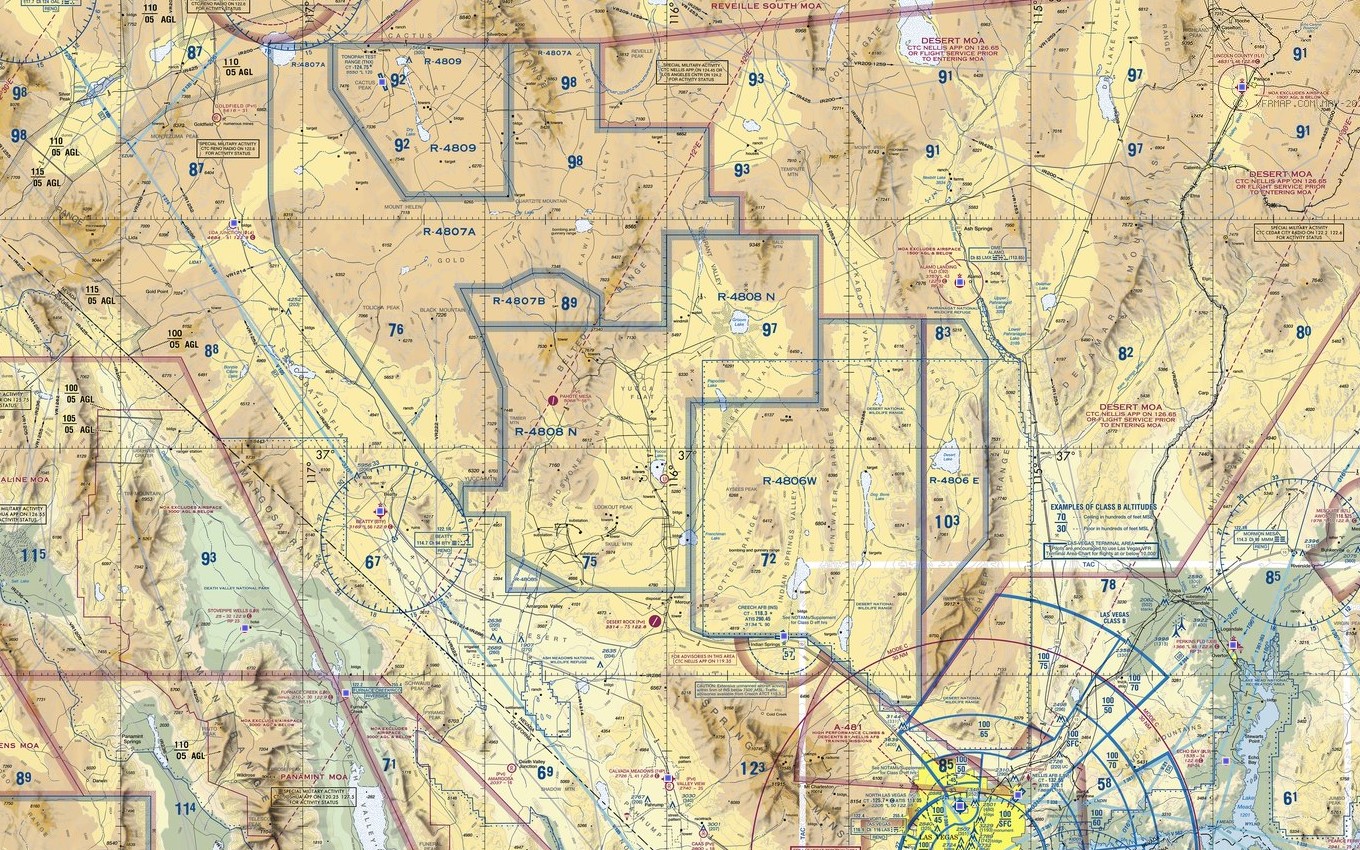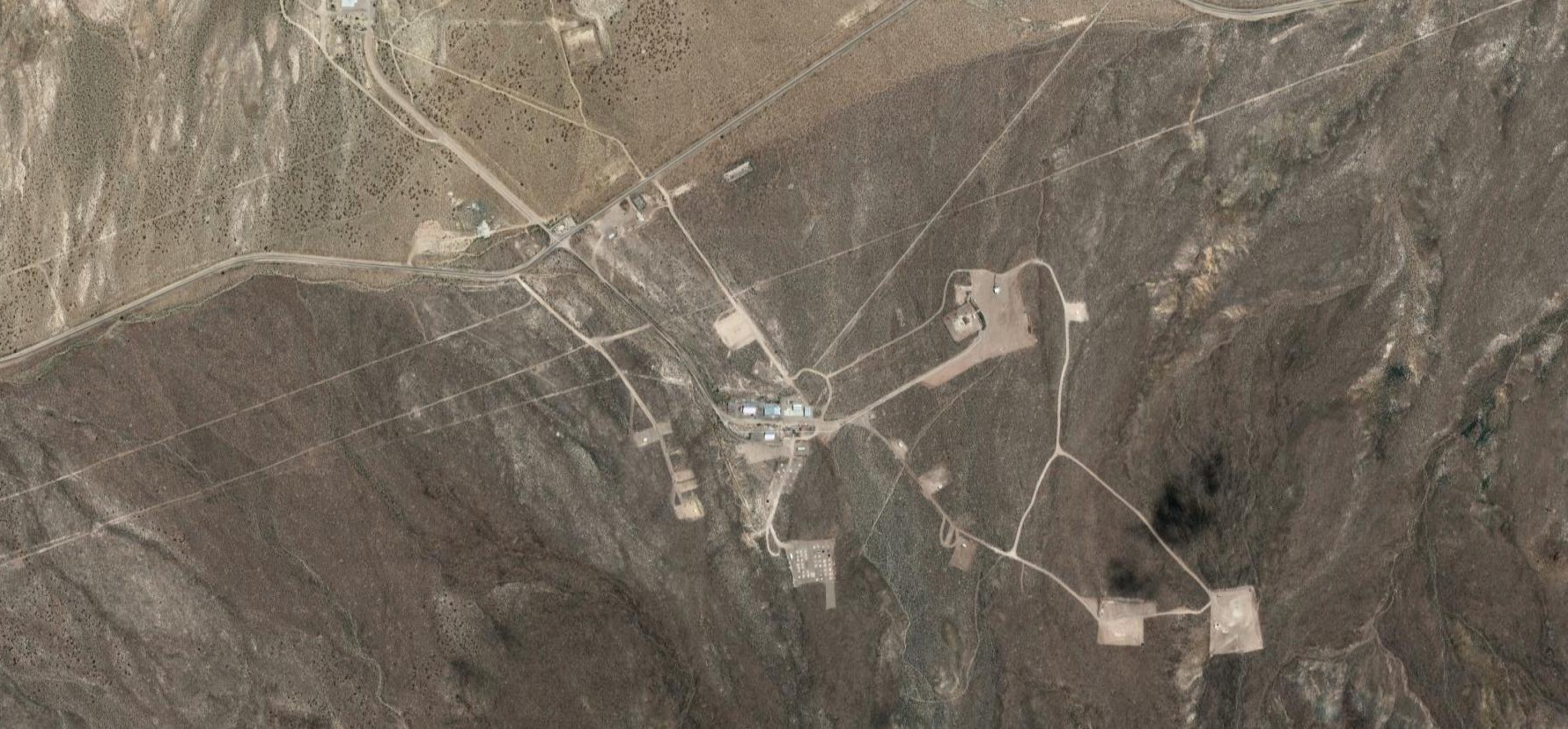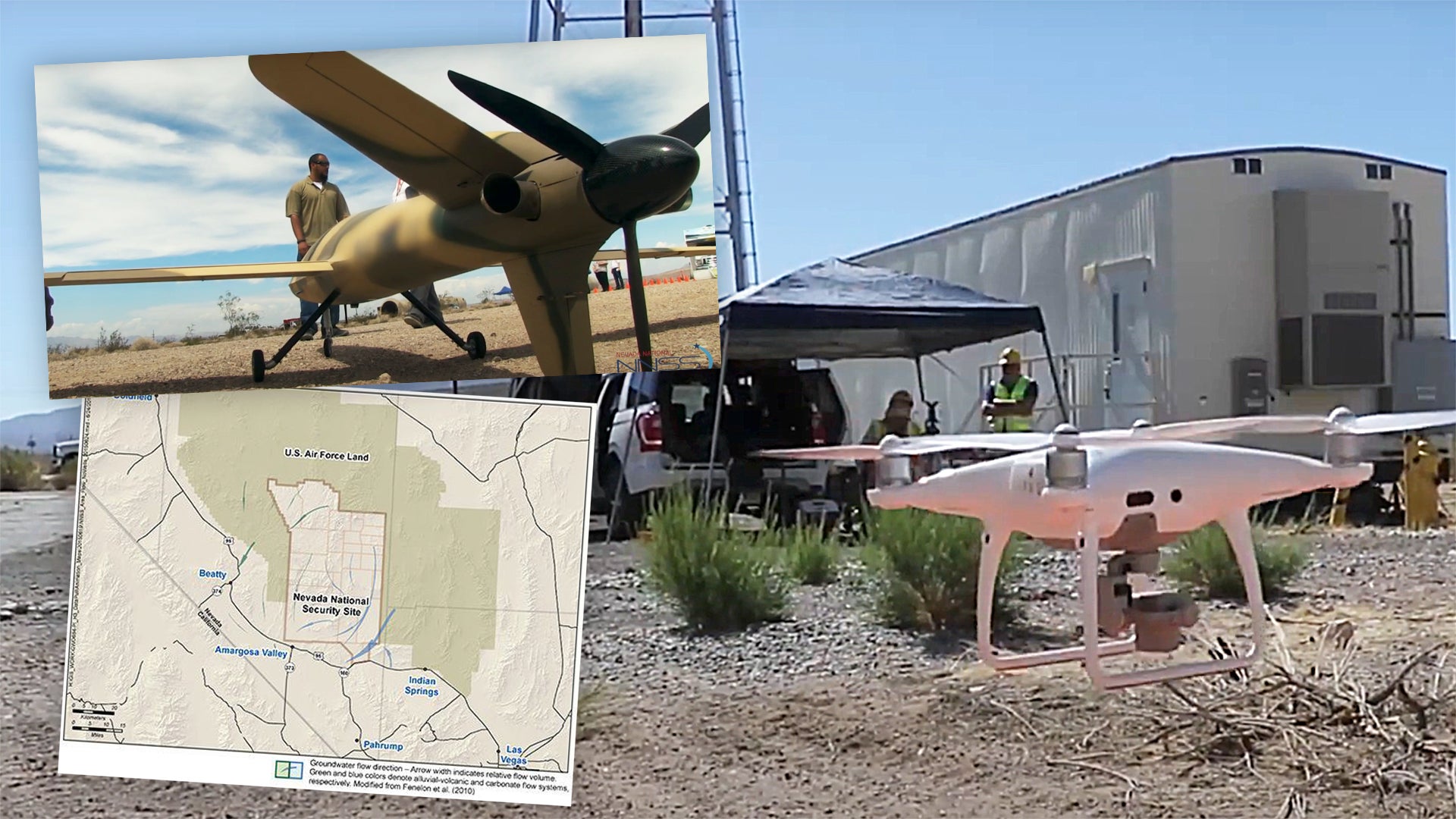A video has appeared on the official YouTube channel of the Department of Energy’s Nevada National Security Site, or NNSS, that highlights the unique counter-unmanned aerial systems, C-UAS, research being conducted in the remote Nevada desert inside highly secure airspace. It says that the site is the most capable and secure testing facility for UAS and C-UAS platforms, largely through being so isolated. It’s essentially a “blank canvas” in the desert where one can operate and test a wide variety of drone and anti-drone technologies outside of the kinds of oversight applied to other test facilities or areas.
The video gives an overview of the work being done at Port Gaston (36.808821, -116.154816), a testing facility within the NNSS just northwest of the Department of Energy (DOE) controlled closed village of Mercury, Nevada. This is the same general area where hundreds of nuclear weapons were tested during the Cold War. The area all lies within a block of restricted airspace called R-4808N, inside which sits R-4808A, also known as “The Box.” That zone makes up the heavily restricted airspace around Area 51. The very high-security NNSS is also partially cocooned within the Air Force’s sprawling Nevada Test and Training Range (NTTR).

According to an NNSS press release, authorities there established the testing site at Port Gaston in coordination with the National Nuclear Security Administration (NNSA) and Office of Defense Nuclear Nonproliferation (DNN) in order to meet the need for “an extensive and agile outdoor testbed that allows for rapid validation of prototype sensors, information aggregation and analysis, and identification of requirements and flexible concepts of operations.”
Port Gaston personnel say in the footage that they are able to accommodate almost any type of testing involving drones or anti-drone technologies. The site offers a rare, nearly restriction-free environment for research and development to take place in a real-world setting. “We literally have the ultimate playground for national security testing,” says Jim McDonnell, Strategic Advisor for Global Security at the site. “If you can imagine it, we can do it here.”

A dedicated Automatic Dependent Surveillance Broadcast (ADS-B) system at Port Gaston allows unmanned aerial vehicles (UAV) tested at the site to carry out beyond visual line of sight (BVOLS) operation within the site’s own airspace, which stretches 16 miles away to another UAS test facility known as Area 25, all while being tracked with site-specific transponders. The site also has its own weather station that can record data down to one-second intervals.
The video states that Port Gaston regularly schedules tests up to 14,000 feet, but that they also own the airspace with an unlimited ceiling should customers need something higher. Whereas the video states that getting the required permits and airspace clearances in less controlled areas can take months, a similar test could be coordinated in mere days at Port Gaston, making it the ideal location for iterative, rapid testing of new capabilities and concepts.

“You do not have to interface with the FAA [Federal Aviation Administration], which saves you four months” says C-UAS Program Manager Von Suddreth in the footage. “When it comes down to it, you get on our calendar, you can come out and do what you need to do and get your data. […] I think we protect the nation by providing this venue for people to game against UAS.”
The area is free from Federal Communications Commission (FCC) restrictions. This means various forms of directed energy C-UAS systems can be tested under the NNSS’s experimental license from the FCC. In addition, Port Gaston is able to host testing of explosives. “To be able to have a private airspace, a non-FAA corridor 16 miles long, and be able to fly high-hazard within that, that’s a dream,” infrastructure analyst Scott Duncan says in the footage. “We should attract some interesting customers. I know we will – we already have.”
It’s also worth noting that another far more secretive base for testing more advanced drone systems sits on the DOE’s NNSS property along the edge of Yucca Dry Lake. You can read more about that shadowy installation here.

With the creation of Port Gaston, the NNSS could allow commercial and governmental UAS developers the chance to flex their technological muscles largely outside of strict FAA protocols, potentially leading to the development of the types of more capable drone defenses needed to protect critical infrastructure and military facilities.
Given the many recent examples of drone incursions into airspace around military operations, civilian population centers, and even nuclear facilities, it’s no surprise that one of the most secure test sites in America would establish a premier research and development facility to help find new ways of defending against the growing drone threat.
Contact the author: Brett@TheDrive.com
